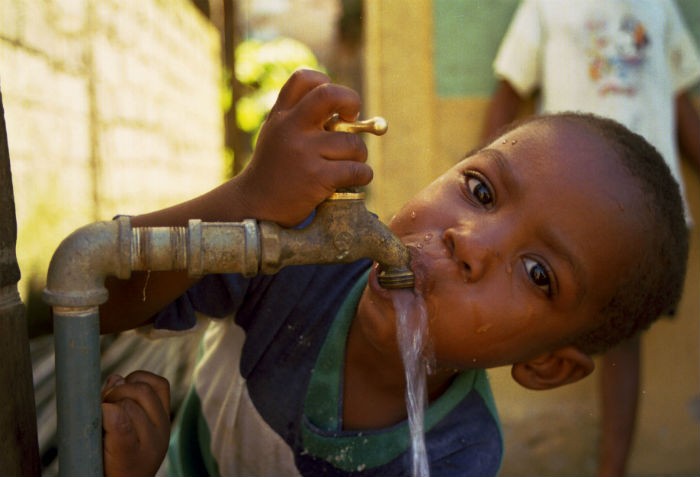Speeches Shim

USAID invested in potable water systems.
Since 1961, the Government of Ecuador and the Government of the United States, through the U. S. Agency for International Development (USAID), have worked in partnership on countless innovative and sustainable programs to advance Ecuador’s development objectives.
USAID invested more than $800 million throughout 53 years of partnership to help improve the lives of millions of Ecuadorians through economic opportunities, biodiversity conservation, infrastructure, civic participation, health services, education, housing, and disaster prevention and mitigation.
Some of the most profound impacts of our work in Ecuador include:
- Education: Between 1965 and 1972, our funding help built nearly 1,000 schools, allowing children to gain access to basic education.
- Road Infrastructure: USAID provided technical and financial support to build major highways, such as the Loja-Macara section of the Panamerican highway, and roads between Quito-Quevedo, Quevedo-Babahoyo, and Babahoyo-Duran. These roads facilitated agricultural trade and improved communication.
- Electricity: The power plants in Cuenca, Santo Domingo de los Tsachilas, Riobamba, and Santa Elena were built through a partnership between USAID and the Ecuadorian Electricity Institute (INECEL).
- Institutional Strengthening: USAID helped create several public and private institutions that have played an important role in Ecuador’s development, such as the Ecuadorian Finance Corporation (COFIEC), the National Finance Corporation (CFN), the Center for Industrial Development (CENDES), and the Ecuadorian Housing Bank (BEV).
- Agricultural Development: With USAID support, the Ecuadorian government increased agricultural production to improve the quality of life of poor, rural farmers. USAID’s contributions included: research, agricultural education, credit for small farmers, road improvements, construction or renovation of communal houses, and development and transfer of appropriate technologies.
- Galapagos Conservation: USAID supported the Government of Ecuador’s conservation efforts of the Galapagos Islands. USAID helped develop the Special Law for the Galapagos and its regulatory documents, trained technical personnel in natural resource management, provided equipment for research and monitoring of species, and restored wetlands on Isabela Island.
- Maternal and Child Health: For nearly three decades, USAID collaborated with the Ministry of Health to modernize, decentralize, and improve their maternal and child health service delivery. We also provided resources for vaccination programs, control of diarrheal and respiratory diseases, and nutrition.
- Southern Border Integration: After the signing of the Peace Agreement between Ecuador and Peru, USAID helped the Government of Ecuador to develop the country’s southern border. From 2000 to 2007, half a million Ecuadorians in the provinces of El Oro, Loja, and Morona Santiago benefited from the construction of 111 water systems, 5,000 health centers, and improved service delivery in 26 municipalities.
- Rehabilitation and Construction of Infrastructure: More than 600,000 people in the northern border provinces benefited from the construction and restoration of 451 infrastructure projects such as water systems, sanitation, vehicular and pedestrian bridges, roads, and irrigation systems.
- Productivity: More than 23,000 families in the northern border provinces improved production, marketing, sales, and export of products such as cocoa, coffee, grains, cereals, and dairy products.
- Investment: With USAID’s technical assistance, the Investment Attraction Agencies of Azuay and Manabi attracted $470 million in new investments, benefiting more than 7,000 families.
- Tourism: USAID supported tourism enterprises to make them more competitive in local and international markets. USAID worked with colonial hotels in Quito, mountain haciendas, and Amazonian eco-lodges. More than 3,000 families have greater employment and business opportunities in the tourism sector.
- Mobile Banking: USAID supported mobile banking booths – called SíCentros – which help thousands of farmers in Carchi and Imbabura provinces to access financial services in their communities. To date, more than 11,000 people have opened savings accounts in rural areas, more than 6,000 producer organizations have received loans, and about 185,000 people have purchased insurance due to SíCentros.
- Biodiversity Conservation: Between 2009 and 2014, USAID contributed to the conservation of 2.7 million hectares of unique biodiversity in protected areas and indigenous territories while supporting sustainable management and development of human talent in communities that depend on these ecosystems.
- Inclusiveness: The first Official Ecuadorian Sign Language Dictionary was developed, with USAID assistance and support from the Vice Presidency of Ecuador and the Ministry of Education, to facilitate the teaching of sign language, and strengthen communication between deaf and hearing communities.
- Protection of Water: The Water Fund for Quito (FONAG) was established with funding and technical assistance from USAID to conserve watersheds that provide water to Ecuador’s capital. USAID also supported the development and strengthening of water funds in Tungurahua, Paute, Loja, Zamora, and Espindola.
- Strengthening Municipal Governments: With USAID’s assistance, 27 municipalities improved delivery of public services, widened citizen participation in public processes, and leveraged more than $32 million from various sources, such as the State Bank, the Ministry of Housing and Public Works, and the National Secretariat of Water.


Comment
Make a general inquiry or suggest an improvement.